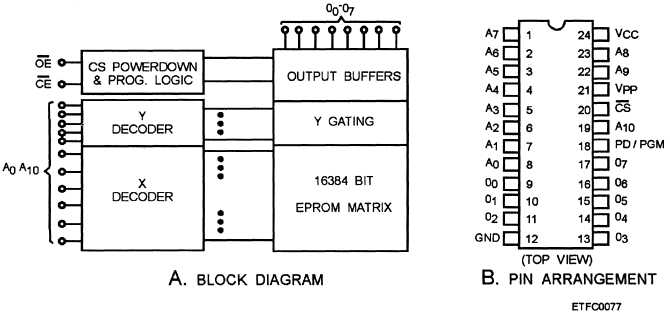Figure 6-38.—Example of a MOS UV EPROM: A. Block diagram; B. Pin arrangement
location are transmitted from the requestor (CPU or I/O
sections) to the memory section. The computer’s
internal bus system transmits the memory request or
selection and location to the memory section.
READ/WRITE MEMORY— In read/write
memories, the data can be retrieved from memory,
altered, and written back into memory. Read/write
memories are random access memories.
They are
categorized according to the materials they are
constructed from and not their basic operation.
CORE MEMORY— Magnetic core storage is
composed of hundreds of thousands of very small
doughnut-shaped ferrite cores. The ferrite cores are
strung together on grids of very thin wires known as
core planes. Each core can store one binary bit 0 or 1)
of data. A core is magnetized by current flow through
the wires on which the core is strung. A core
magnetized in one direction represents a binary zero,
and when magnetized in the opposite direction, a binary
one. The direction the core is magnetized is dependent
on the direction of current flow through the wires on
which it is strung.
FILM MEMORY— Magnetic film storage is
composed of hundreds of thousands of very small
“I”- shaped magnetic thin film spots. Two paired thin
film spots are used for each bit position. A film spot is
magnetized by current flow through the word line or
sense/digit line.
A film spot magnetized in one
direction represents a binary zero, and when
magnetized in the opposite direction represents a binary
one.
SEMICONDUCTOR MEMORY— Semicon-
ductor RAM refers to semiconductor IC memories that
can be used in a read mode as well as a write mode.
Semiconductor memories are normally nondestructive
readout and volatile memories.
RAM CHIP— RAM chips make up semiconductor
RAM. They contain large numbers of memory cells
and the logic to support them. Each memory cell is an
electronic circuit that has a least two stable states. Each
of the two-state memory cell circuits can store one bit
(0 or 1).
STATIC RANDOM ACCESS MEMORY
(SRAM)— Static random access memories (SRAMs)
are semiconductor integrated circuits that use a flip-flop
application for each storage cell. The flip-flops are
made of either bipolar or MOS transistors.
DYNAMIC RANDOM ACCESS MEMORY
(DRAM)— Dynamic random access memories
(DRAMs) are semiconductor integrated circuits (ICs)
6-31


